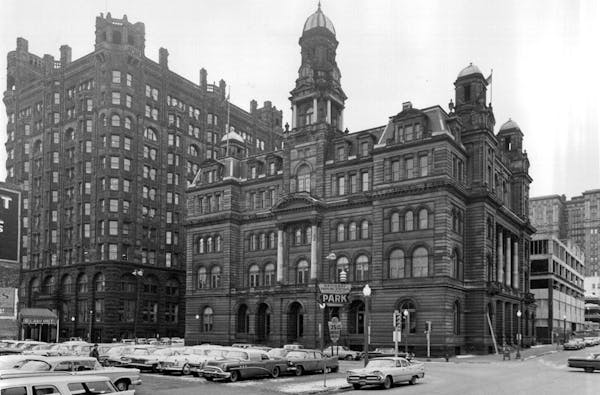Neighborhoods and the buildings in them are cultural expressions of the people who built and shaped them over time. In the Twin Cities, African Americans, Indigenous people, Jews and others were often denied the opportunity to design, build, work and even live in certain areas.
In the unrest following the killing of George Floyd, it's time to take a hard look at who has the power to shape our environment today.
We talked with three nationally recognized Black architects about practicing architecture in Minnesota: James Garrett Jr., the owner and managing partner at 4RM+ULA architects in St. Paul; Mohammed Lawal, CEO and principal architect at LSE Architects in Minneapolis; and Brazilian-born Damaris Hollingsworth, owner of Design by Melo. The conversation has been edited for brevity and clarity.
Limited urban exposure
To Garrett, many of the buildings and streetscapes in the metro area are uninviting for many of the people who live here.
"A major reason," he said, "is that the majority of architects and people in charge of the built environment — from city officials to planners and designers — are not from cities.
"Their formative years were often spent in bastions of homogeneity, such as small towns and newer suburbs, where there were few people of color or recent immigrants."
A limited exposure to urban living accounted for mistakes like the 1970s closing of Nicollet Avenue at Lake Street, then a thriving neighborhood, to build a suburban-scaled Kmart.
Garrett, Lawal and Hollingsworth also said that design for public housing projects often isolated people in their apartments and that public art in the cities often had little local or cultural references.
They also said they felt the need to speak out after Floyd's death.
"I've been exhausted and talking a lot," said Garrett, who has been part of stories in national architecture magazines, podcasts and social media posts.
"Each one of us is a firm owner," Lawal added. "We understand the importance of our voices as business leaders. But we must nurture more minority-led architecture firms to expand our impact."
A fresh approach
The practice of architecture is imbued with so many white cultural norms and procedures that most people never question them.
For example, architects who are working on public projects are generally required to facilitate "public participation" and get local input in shaping the design. But Garrett, Lawal and Hollingsworth agreed that the process, determined by largely white firms, doesn't work well for people of color.
Public participation events for new libraries, schools and parks tend to adhere to a strict schedule, beginning and ending on time. But for audiences who have felt left out for generations, that is not the best approach.
"For public project meetings, I tell my clients that if you're asking me to lead this event, I reserve the right to stay as long as people have questions," said Lawal.
When he was designing the award-winning Sumner and Webber Park libraries in Minneapolis, Lawal stayed well into the night at several meetings until every voice was heard.
Hollingsworth questioned the value of formal public participation, arguing that public meetings don't work for people who have hourly jobs or children.
"Public comment sessions are often poorly promoted," she added, citing a recent St. Paul project in the Rondo neighborhood where announcement fliers appeared in neighbors' doors the night before the event.
In their practices, all three architects said they strive to talk directly with people in neighborhood settings such as barber shops, churches, mosques and senior living centers.
"That's why I de-emphasize the importance of all this public meetings foolishness and lift up the significance of other means of engaging," Garrett said. "People who attend public design input sessions tend to be older, whiter and wealthier. They have the time on their hands."
A largely white profession
There are fewer registered Black architects in the state than there were 20 years ago, said Lawal. Today, there are only 18.
In relatively homogenous states like Minnesota, reasons for this disparity include a lack of role models, access to mentors and the cost of attaining an architecture degree.
In 1992, Lawal founded the Twin Cities chapter of the Architectural Youth Program to introduce minority high school students to architecture. The program included visits to design offices, building tours and personal mentoring. In its 17 years, about 1,000 students went through the program and several became architects.
"Our real goal was to raise their sense of potential," Lawal said. "To encourage these kids to explore career options and to go to college."
Yet, despite such efforts, the profession remains largely white.
"A lot of Minnesota firms say they want to become more diverse, but claim that it's difficult to find talented, BIPOC architects here," Garrett said. "I respond, 'Then go look outside the state. … There are a number of quality architecture programs at historically Black colleges and universities.' I can name dozens of people whose talent could be recruited to come here — and make a great impact."
Garrett acknowledged that "after George Floyd's murder, many larger design firms are talking more about equity and offering to do pro bono work in underserved, poor communities. But will they still care four months or four years from now?"
Lawal added, "We live with a history of structural racism that's been around for 400 years. Diversifying who gets to shape the built environment is going to take a much deeper structural change than talk of good intentions from our profession."
Frank Edgerton Martin, a landscape historian and writer, has written for Landscape Architecture and other magazines.








![Tomas Reynolds delivered sandwiches to customers. ] GLEN STUBBE • glen.stubbe@startribune.com Friday, February 22, 2019 Founded by a civil rights at](https://arc.stimg.co/startribunemedia/WV6IJY7ZPEGV2SISM57QGQ2XR4.jpg?w=75&h=75&fit=crop&crop=faces)

